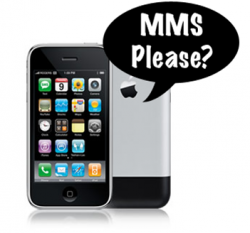What Is SMS?
SMS is the initialism for Short Message Service, a service that provides text-based messaging services on subscriber’s phones, mobile devices, or web-enabled devices. The first SMS message was sent in the UK in December of 1992. SMS text messages use a standard protocol but with length that varies depending on the alphabet used. An SMS message may contain:
- 160 7-bit characters
- 140 8-bit characters
- 70 16-bit characters.
SMS messages are initiated by a sender and sent to a Short Message Service Center (SMSC), which stores and forwards it. The message is sent, and if it fails, it is put in a queue to retry or discarded, depending on the terms the center offers and the customer has chosen. Delivery reports are available to ensure the sender of receipt.
What is MMS?
MMS is the initialism for Multimedia Messaging Service, a service that provides the service of sending multimedia to a phone or mobile device. Content that can be sent includes images, music, animation, multimedia, and interactive media. It became available more gradually than SMS, after a number of technical issues during its early years.
Sending an MMS starts off like an SMS message, but there are some extra steps that may be needed. After the center receives the MMS, if the recipient uses a different MMS carrier, the message is forwarded via Internet to that carrier. The recipient’s carrier determines if the recipient’s device is MMS-capable. If it is, the message is sent as a text message containing a URL, and the recipient can have the phone browser display the message content. However, if the phone is not capable of viewing an MMS, the message can be accessed via a computer web browser.
Usage and Revenue of SMS vs MMS
In 2008, there were 4.1 trillion SMS messages sent, resulting in a $81 billion revenue. In the same year, there were 50 billion MMS messages sent, resulting in $26 billion revenue. Note that though there were 82 times the number of SMS messages sent as MMS messages, the income from those SMS messages was only a little more than 3 times as much as that of the income from the MMS messages. Providers make (and customers charge) a much higher price for MMS messages than for text messages.
Issues with SMS and MMS
An immediate issue that arises with MMS is, “what if an MMS message is sent to someone without an MMS-capable device?” As noted above, this may simply delay the message until the recipient gets to a device that can read the text with the URL. More serious issues involve the use of SMS and MMS messages to spam and spoof. Spam attacks send the recipient unwanted messages. Spoofing attacks involve a con in which a trusted party/site is duplicated with the hope of getting the recipient to reveal personal information, such as credit card numbers, bank accounts, social security numbers, etc. Other issues have to do with text messages jamming the networks if too many are sent, and the need to reformat MMS messages.
